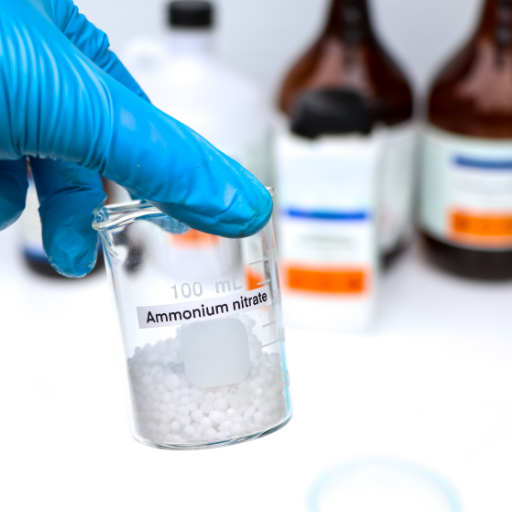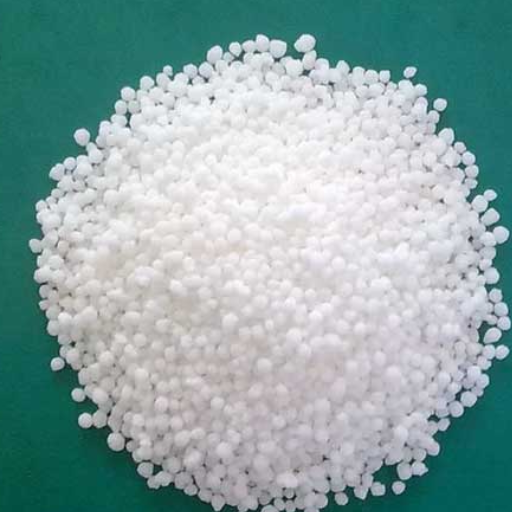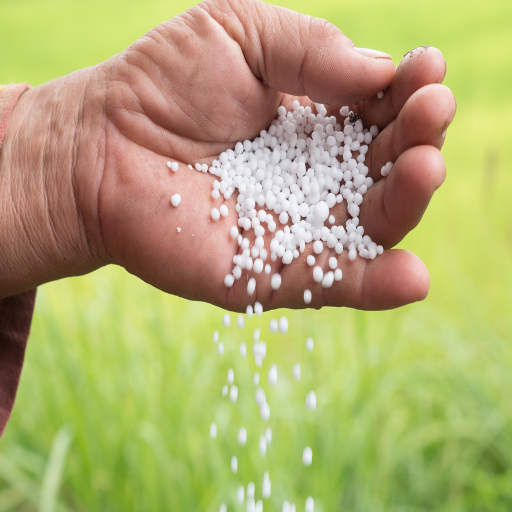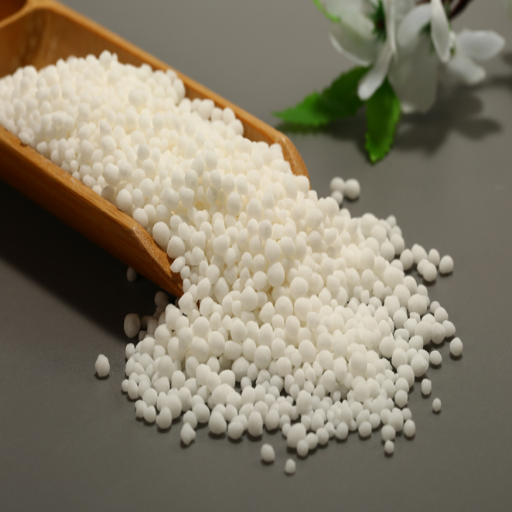The agricultural industry relies heavily on fertilizers to optimize crop yields and meet the growing demand for food. Among the numerous options available, Calcium Ammonium Nitrate (CAN) and Ammonium Nitrate (AN) stand out as two of the most commonly used nitrogen-based fertilizers. While both are vital for supplying essential nutrients to plants, their chemical composition, application methods, and impact on soil health differ significantly. This article provides a comprehensive comparison of these two fertilizers, aiming to help farmers, agronomists, and agricultural professionals make informed decisions based on their specific requirements. By the end of this guide, you’ll gain a deeper understanding of how CAN and AN function, their practical advantages and disadvantages, and the scenarios in which each is best suited.
Physical Properties and Granular Characteristics

Texture and Solubility
In the case of Calcium Ammonium Nitrate (CAN) and Ammonium Nitrate (AN), the two substances differ in their physical properties concerning texture and solubility. CAN granules are somewhat coarser, thereby lessening caking during storage and when being transported. On the other hand, AN is produced as finer granules or prills, being more susceptible to moisture absorption and caking, and hence demands extreme care in its handling and storage.
They do both dissolve well in water, though the AN formation is a little quicker due to the simplicity of its composition. This rapid dissolution affords a quick nitrogen release to the plants, making it best in situations of immediate nitrogen uptake. CAN dissolves slightly slower, and although it is faster dissolving, it offers a leaching-wise advantage, as calcium carbonate or magnesium carbonate hinder leaching by stabilizing the release of nitrogen.
Variability in texture and solubility makes CAN suitable in cases where nutrients are required to be slowly released with added soil conditioning benefits. An aqueous solution of AN has to be deployed for immediate nitrogen needs, such as periods of rapid plant growth or emergency nutrient adjustments. A site has various agronomic requisites; thus, one fertilizer might be preferred over the other depending on location and individual requirements.
Storage and Handling Requirements
To maintain effectiveness and ensure safety, the storage and handling of calcium ammonium nitrate (CAN) and ammonium nitrate (AN) are crucial. Both fertilizers should be kept in an environment that is cool, dry, and well-ventilated, away from sources of heat, sparks, or an open flame. AN, especially, is an oxidizing agent and hence could present a risk of fire if exposed to combustible materials. It is, therefore, of paramount importance to have a storage site free from any organic matter or flammables to present a minimum risk.
It is very important to keep both CAN and AN in tightly sealed containers to prevent moisture absorption since both are highly hygroscopic. If exposed to moisture, these fertilizers would cake and thereby become difficult to apply. Also, these fertilizers should be stored on pallets instead of directly on the ground to help air circulation and protect against contamination. Fertilizer bags are frequently checked to avoid accidental spills or exposure due to damaged packaging.
During handling, everyone involved must wear personal protective equipment (PPE), including gloves, safety goggles, and dust masks, to avoid skin and respiratory irritation from contact with fertilizer particles. Clean the equipment thoroughly after application to avoid corrosion with residual contamination. One must always follow local regulations and guidelines for proper storage and transportation of oxidizing substances, thereby minimizing risks and ensuring compliance with safety standards.
Impact on Soil Health
The application of fertilizers greatly influences the health and vitality of the soil. While benefits may be acquired in some cases, the opposite may be true in others, all dependent on the type of fertilizer, quantity, and time of application. A detailed analysis lists some of the major impacts:
- Nutrient Enrichment: Fertilizers supply the essential nutrients: nitrogen (N), phosphorus (P), and potassium (K), that replenish the soil and promote healthy plant growth. It has been observed, for example, that under optimum conditions, nitrogen fertilizers can boost yields by 40%.
- Alteration of Soil pH: If continued for long by the use of fertilizers such as ammonium sulfate, soils become acidic. Acidic soils can pose a problem for nutrient availability and for microbial action; hence, the productivity may go down with time.
- Soil Organic Matter Depletion: The excess use of synthetic fertilizers has been associated with soil organic matter depletion. This depletion occurs in instances in which microbial communities lose diversity and become inefficient in recycling organic materials.
- Risk of Nutrient Leaching: Over-application of water-soluble fertilizers causes the leaching of nutrients-nitrates, particularly, into groundwater systems. Based on reports from numerous studies, a 50 mg/L nitrate concentration in groundwater systems is too high to not risk environmental and human health.
- Soil Salinization: Excessive amounts of some fertilizers, especially sodium-based ones, have a direct role in the salinization of soil. Salinization reduces the ability of soil to hold water and nutrients and eventually reduces crop growth and arability.
In order to sustain management of the soil and mitigate all of these challenges, one must establish appropriate application methods, integrate organic amendments, and conduct regular monitoring of soil health.
Primary Uses in Agriculture
Application in Crop Growth
The application of fertilizers and soil management techniques is fundamental for increasing yield and promoting sustainable agriculture. The following are five primary factors that explain their influences on crop growth, supported:
- Improved Nutrient Availability: Fertilizers provide essential nutrients like nitrogen, phosphorus, and potassium critical to plant development. Studies reveal that proper nutrient application can bring a 30-50% increase in crop yield in soils that lack nutrients. For example, nitrogen is involved in chlorophyll production, which is closely associated with the photosynthetic efficiency of plants, wheat or corn.
- Soil Quality Improvement: Application of organic fertilizers like compost or manure positively improves soil structure and its water retention capacity. It has been found that compost integration into sandy soils can increase water-holding capacity by as much as 20%, thus alleviating the stresses imposed by drought on crops.
- Reduction of Soil pH Imbalance: The application of lime or gypsum helps in neutralizing acidic soils for better root development and nutrient uptake by plants. Data from field observations indicate crop yields of soybean and barley increase in the range of 15-20% when grown on soils wherein the pH has been optimized between the 6.0 to 7.0 range.
- Pest and Disease Management: Application of micronutrient fertilizers, such as those containing zinc and copper, enhances plants’ resistance mechanisms against attacks by pests and diseases. For example, application of zinc-enriched fertilizers has been associated with a 27% reduction of fungal incidence in rice crops under controlled experiments.
- Support for Sustainable Crop Rotation Systems: Fertilizers supplement various crop rotation systems with the essential nutrients required by other plants. From a five-year study, it was observed that potassium addition to corn and soybean rotations afforded an average yield increase of 10% per year with respect to soil health parameters.
Each of these cases puts a greater emphasis on precision in fertilizer use and soil management methods to raise food productivity while protecting the environment.
Specific Crop Suitability for Each Fertilizer
The type and consumption of fertilizers must correspond to the nutrient demand and growth characteristics of a particular crop for maximum efficiency and sustainability. For example, nitrogen fertilizers like urea or ammonium nitrate will work best for vegetative growth of cereal crops such as wheat and maize because these cereals require high nitrogen levels during the early growth stages. Phosphorus fertilizers, such as monoammonium phosphate, are vital for root growth in leguminous crops like chickpeas and lentils, which require phosphorus for germination and nodulation.
Potassium fertilizers, including MOP, are best suited to root or tuber crops such as potatoes and sugar beets because potassium helps in starch synthesis and improves tuber quality. For flowering crops-that is, tomatoes and peppers-balanced fertilizer combinations containing nitrogen, phosphorus, and potassium in NPK formulations, either 10-10-10 or other ratios specific to the crops, usually serve as promoters of flowering, fruit set, and fruit development. Trace elemental fertilizers such as zinc sulfate or boric acid are often needed for crops whose nutritional status is highly sensitive-micrometer-wise-to diseases or deficiencies, and oilseeds, for example-where inordinate yield losses may be triggered by deficiencies.
Precision agriculture technologies, together with site-specific soil testing, offer enhanced tailoring of fertilizer use for each crop under consideration by stacking up scenarios of variability in soil nutrient availability and crop nutrient requirements, thus eliminating waste and nutrient leaching, while simultaneously reinforcing sustainable farming practices.
Benefits of Using Calcium Ammonium Nitrate
- Improved Nitrogen Availability: Calcium Ammonium Nitrate (CAN), with its 27% nitrogen by weight, is a highly efficient nitrogen fertilizer. Half of it is ammonium nitrogen (NH₄⁺), while the other half consists of nitrate nitrogen (NO₃⁻), thus ensuring nutrient availability in the short and long term for the crops being cultivated. Nitrate nitrogen is available to plants quickly, whereas ammonium nitrogen prevents rapid loss in soil.
- Soil Health Improvement: CAN supplies calcium (Ca) to the soil (about 8% Ca by weight), which is one of the critical factors for soil structure and health. Calcium improves soil aeration and infiltration of water, reducing compaction, all of which are vital for the environment for root growth and microbial activity.
- Reduced Nitrogen Losses: Ammonium in CAN is less prone to leaching when compared to nitrate-only fertilizers. Research reveals that CAN can lessen the nitrogen losses by about 15-20 percent during high rainfall, making it suitable for various climatic conditions.
- Application in All Soil Types: Calcium Ammonium Nitrate can be applied on most soils over a wide range of pH values. It has a neutral or slightly basic pH and will not, therefore, lead to soil acidification as some fertilisers high in nitrogen tend to do.
- Support for High Crop-Yielding Systems: CAN enhances the growth of highly yielding varieties under intensive cropping systems owing to its balanced nutrient composition. According to empirical studies, incorporation of CAN may raise yields by 12-15%, especially for crops such as maize, wheat, and oilseeds.
The above-stated benefits emphasize the multifarious utility of Calcium Ammonium Nitrate as it forms an essential part of precision agriculture and sustainable nutrient management techniques.
Environmental Impact and Concerns

Soil Contamination Risks
The contamination potential of the soil by Calcium Ammonium Nitrate (CAN) arises when fertilizer is applied over a long period in agricultural systems that practice imbalanced nutrient use. Over-application or improper use of nitrogen-based fertilizers such as CAN causes the accumulation of nitrates in the soil, and this endangers soil health and fertility given time. When they reach high levels, nitrates can upset the microbial balance in soils, with a possible outcome of a reduction in the number of beneficial microorganisms that assist nutrient cycling. This thereby ushers in further soil degradation, reducing its ability to sustain agriculture in the long run.
Another important risk involves the leaching of nitrate into deeper soil layers, so it has been observed to reduce organic matter while increasing soil salinity. Studies state that in some agricultural regions with heavy irrigation or rainfall, the high nitrate level acts as a major contributor to soil acidification. Acidification prevents nutrient availability while increasing the solubility of toxic metals, namely aluminum and manganese, that adversely affect crops and deteriorate soil structure. This, therefore, calls for prolonged caution and strict monitoring of the application rate of CAN to reduce its environmental impact.
Mitigation measures are imperative to be pursued to systematically tackle these problems. The implementation of precision agriculture measures such as variable rate application and direct soil monitoring has so far been shown to prevent nitrate accumulation. In combination with cover crops, organic amendments, and crop rotations, these measures may enhance the resilience of soils while helping to reduce the reliance on synthetic fertilizers. Farmers should consider these sustainable technologies along with a controlled application of CAN so that the soil may be maintained at optimum health and given an opportunity to produce at optimum nutrient availability and eventually productivity. The goal of these approaches is to spotlight the need for a balance between agronomic efficiency and environmental stewardship to effectively tackle the concerns of soil contamination.
Water Contamination and Nitrogen Leaching
Though a natural process, nitrogen leaching may lead to severe environmental pollution when caused by excessive application of nitrogen fertilizers such as urea, ammonium nitrate, and calcium ammonium nitrate fertilizers, or CAN. When these fertilizers are applied either more than plant uptake or under conditions unsuitable for their application, nitrate (NO₃⁻) ions tend to enter the soil and percolate into groundwater systems. This becomes such a major problem during periods of heavy rainfall or excess irrigation since nitrate-enriched water rushes through the soil formation towards aquifers and surface water bodies.
Whatever impact this nitrogen leaching exerts may be beyond mere water quality degradation. A few health risks include cancer, methemoglobinemia (commonly called “blue baby syndrome”), and others, while having high nitrate levels in drinking water. From the ecological perspective, nitrate leaching causes eutrophication in the aquatic ecosystem, which in turn causes excessive algal growth that depletes oxygen levels and causes disruption to biodiversity.
Precision fertilization is one strategy used for mitigating nitrogen leaching. Some methods include split fertilizer application so nitrogen is supplied only during crop demand, cover crops to take up soil residual nitrogen, and nitrification inhibitors to keep nitrates from being produced as quickly. Supported by technological advances in precision agriculture, these methods present viable approaches in reducing nitrogen losses and environmental pollution. If these practices were also linked to stringent water quality monitoring, the negative impacts associated with nitrogen leaching could be averted while ensuring agricultural production.
Greenhouse Gas Emissions and Nitrous Oxide Release
The agricultural sector represents a major source of greenhouse gas emissions, nitrous oxide (N₂O) being one of them. N₂O is a potent greenhouse gas whose global warming potential is almost 300 times greater than that of carbon dioxide (CO₂). These emissions primarily emanate from the microbial processes in the nitrogen cycle, namely, nitrification and denitrification, which in turn occur in soils treated with synthetic fertilizers or organic manure. An abnormal application of nitrogenous fertilizers increases N₂O emissions by feeding more nitrogen to microbes that convert it into this gas. Hence, an extremely fine line must be maintained between ensuring optimal crop yields and mitigating this emission.
Correct management practices, therefore, will minimize the emission of nitrous oxides. With the tools at their disposal in precision agriculture, farmers manage the application of fertilizers on a site-specific basis, thereby hugely diminishing nitrogen excess. Limiting N₂O production at the microbial source is more or less achieved by applying fertilizers in split doses, adoption of the adoption of controlled-release fertilizers, and nitrification inhibitors. Also included in this list are crop rotations involving cover crops and better irrigation that decrease the emission, while plant uptake of nitrogen is enhanced, and conditions conducive to denitrification in the other areas are diminished.
In my point of view, nitrous oxide emission is something that requires an act of innovation, an act of education, and even an act of regulation. That means farmers must have access to modern technologies and resources that enable sustainable fertilizer management procedures. At the same time, however, policymakers and scientists must ensure that stringent standards are established to reward the reduction of emissions while maintaining the productivity of agriculture. Therefore, by focusing on integrated solutions comprising technology, proper land management, and solid environmental policy, real steps can be taken in reducing greenhouse gas emissions from agricultural systems.
Application Techniques and Strategies

Effective Fertilization Methods
Correct fertilization methods are important for improving yields and carrying out measures to mitigate environmental impacts. One of the most commonly used means of fertilization is precision fertilization, which uses information obtained through GPS-guided equipment and nutrient mapping software. These technologies ensure proper nutrient application according to the soil type, nutrient levels in the soil, and requirements for crops, thus curtailing nutrient wastage and runoff into water bodies.
Another solution-in-the-making is controlled-release fertilization, with fertilizer nutrients being released in synchronization with plant uptake to reduce nitrogen leaching to water bodies and gaseous emissions to the atmosphere. The use of organic fertilizers, e.g., compost or manure, simultaneously increases soil improvement by raising its organic matter content and microbial activity, vital for sustainable agriculture.
Good nutrients are balanced by soil-building techniques, which may also include nutrient cycling. Crop rotation uses different groups of nutrients depending upon the crops sown and taken from the soil; cover crops minimize nutrient loss by holding the soil during the off-season period. Thus, when soil fertility enhancement is considered from composting, organic fertilizers, and synthetic fertilizers to nutrient cycling, an agricultural system may sustain high productivity in keeping with environmental sustainability values.
Maximizing Efficiency in Fertilizer Use
Through precision agriculture application methods, fertilizers are applied in the right amount at the right time and in the right place to maximize the efficiency of fertilizer use. Variable rate application (VRA) is a best practice that implements technological tools (such as equipment integrated with GPS and soil mapping) to use fertilizer as needed by growers to compensate for the spatial variability of nutrient levels in soils. This minimizes oversupply and runoff while ensuring that nutrients are adequately supplied to the crop mound upon which they may grow.
Furthermore, if farmers integrate decision-support tools like nutrient-management software to work through their soil test data, crop needs, and environment, these tools will help make more precise fertilizer recommendations for an informed approach to maximize productivity and protect the environment. Aligning split application with this approach to fertilizer application-were nutrients are applied in synchronization of crop growth stages through split application once or twice-will help increase efficiency further.
According to recent studies, the practice of precision agriculture can reduce the usage of fertilizers by up to 20% while maintaining or even boosting the yield of crops. Not only does this increase economic gains for growers, but such efficiency also lessens the chance that nutrients leach away into water bodies nearby, which is a major cause of eutrophication. Combining data-driven technologies with sustainable agricultural practices enables the farmers to achieve a very high degree of efficiency in fertilizer usage, ensuring food security to meet global demands while conserving the present natural ecosystem.
Minimizing Environmental Impact During Application
In the fertilizer application process, to practically lessen the environmental impact on the greater landscape, overlaying strategies must be used. These processes intend to prevent nutrient runoff, GHG emissions, and soil erosion, thus promoting better crop productivity.
- Precision Application Technology: Utilizing GPS guidance and VRT, fertilizers can be applied with accuracy, wherein the nutrients are applied only to the land that needs them. It has been shown that by employing precision application technology, fertilizer application inputs can be reduced up to 30% without affecting the yields.
- Adoption of Slow-Release Fertilizers: These fertilizers slow down the release of nutrients into the soil, thus limiting leaching and volatilization. They may result in about a 20-40% reduction in nitrogen losses under high rainfall conditions.
- Applying the 4Rs Nutrient Stewardship Framework: Fertilizer management through the 4Rs-Right source, Right rate, Right time, and Right place-ensures optimized application of nutrients. For example, fertilizers applied during the peak demand of crops have been found to increase nitrogen uptake by 50% as compared to traditional applications.
- Use of Cover Crops: Cover crops, such as clover or rye, trap any residual nutrients in the soil that might otherwise have been leached into water bodies in excessively high levels. Studies have shown that cover crops reduce nitrate leaching by 30-50% on average.
- Buffer Strips and Vegetative Barriers: Buffer strips and vegetative barriers along field edges intercept nutrient-laden runoff before it reaches local waterways. These natural filters restore damage. They can reduce phosphorus runoff by 40% and sediment losses by 60%.
The integration and promotion of sustainable practices with modern technology can reduce the environmental footprint of the agricultural sector while not at all compromising productivity, or somewhat improving it.
Long-term Farm Management Considerations

Assessing Soil Types and Nutrient Requirements
When soil types and nutrient requirements are considered, I first consider the physical and chemical properties of the soil. These properties include texture, structure, pH of the soil, organic matter, and CEC. Knowing the texture of a soil-a sandy, clay, or loam-is essential to understanding its drainage capacity and water retention characteristics, which are the very first criteria for choosing crops or ensuring that these can carry out proper growth. A pH test shows whether the pH is slightly acidic or neutral, or even very alkaline. Accordingly, adjustments would be made by liming or sulfur.
The evaluation of the nutrient profile of the soil is equally vital, since it determines the fertility and productivity potential. I always carry out soil analysis, checking the content of the principal macro- and micronutrients such as N, P, and K, calcium, and magnesium. From these elements, I will be able to trace any deficiencies or imbalances that may hamper yields. From this, an accurate fertilizer schedule can be devised, ensuring that plants receive proper nourishment throughout their growth stages.
In addition, I look after ultimate soil health through practices such as crop rotation, cover cropping, and organic amendments. These all act to improve soil structure and enhance microbial life while preventing nutrient depletion as time goes on. Regular soil assessments coupled with sustainable management practices provide a double-track for increasing both productivity and environmental stewardship; the well-being of short-term yields versus long-term agricultural viability.
Regional Climate Conditions and Their Influence
Climatic conditions in a certain region thus dictate everything in the agricultural arena: soil properties, water availability, and crop selection. Seasonal diversity in temperature, variation in the magnitude of precipitation work for or against the chances of a particular crop being grown or its growing cycle and yield. For example, in places with heavy precipitation and moderate temperature, crops may grow very well by means of rainfall, but in dry areas, irrigation methods need to be upgraded, and crop varieties should be drought-resistant.
Climatic zone variations have a direct bearing on the occurrence of pests and diseases, thereby affecting plant health and productivity. For instance, in warmer regions, pest generation cycles tend to be faster, thus exerting greater pressure upon integrated pest management systems. Historical and real-time climatic data translate into forecast potentials that utilize scientific evidence to aid planning. Further, microclimate studies in a large “regional” context tend to be more complicated since slight variations in elevation or distance from a water body could translate into stark differences in temperature and humidity, thus having effects on plant growth and field management.
Technologies such as satellite monitoring and weather forecasting are now being developed to help the farmer function in these climatic conditions. Together with good datasets, these so-called intelligent tools are able to provide exact predictive insights on how to build resilience against variable weather patterns, often asymmetrical patterns from long-term climate change. Such agricultural practices must utilize these crucial data to remain efficient and sustainable in an environment of varying and unpredictable weather.
References
Frequently Asked Questions (FAQ)
Q: What is the primary difference between calcium ammonium nitrate and ammonium nitrate?
A: The primary difference lies in their composition. Calcium ammonium nitrate contains both calcium and ammonium ions, making it a double salt, while ammonium nitrate is purely made up of ammonium and nitrate ions. This difference in composition affects their solubility and nutrient release in various environmental conditions.
Q: How does the nitrogen content compare between calcium ammonium nitrate and ammonium nitrate?
A: Ammonium nitrate typically has a higher nitrogen content, around 34% nitrogen, making it a potent nitrogen fertilizer used worldwide. In contrast, calcium ammonium nitrate has a lower total nitrogen content, approximately 26%, but it also provides calcium, which is beneficial for plant growth.
Q: Can calcium ammonium nitrate be used in homemade explosives like ammonium nitrate?
A: While both compounds can be utilized in improvised explosive devices (IEDs), ammonium nitrate is more commonly associated with explosive uses due to its higher nitrogen concentration and its properties when mixed with fuels. Calcium ammonium nitrate is less frequently used in this context as it is primarily an inorganic fertilizer.
Q: What role does nitric acid play in the production of ammonium nitrate?
A: Nitric acid is a key ingredient in the synthesis of ammonium nitrate. It reacts with ammonia to produce ammonium nitrate through a process involving the evaporation of water, resulting in a highly soluble nitrogen fertilizer. This process is crucial for fertilizer manufacturers aiming to produce efficient nitrogen sources for crops.
Q: How does calcium ammonium nitrate contribute to sustainable agricultural production?
A: Calcium ammonium nitrate supports sustainable agricultural production by providing a balanced source of nitrogen and calcium, essential for plant health. Its slow-release properties and low volatility reduce the risk of nitrogen leaching, making it more environmentally friendly compared to other nitrogen fertilizers like urea-based options.
Q: What are the weather conditions affecting the granulation of ammonium nitrate?
A: Weather conditions such as humidity and temperature significantly affect the granulation process of ammonium nitrate. High humidity can cause the granules to clump, while extreme temperatures can impact the stability of the compound. These factors must be controlled to ensure efficient production of this nitrogen fertilizer.
Q: Are there any environmental concerns associated with using ammonium nitrate?
A: Yes, there are environmental concerns related to ammonium nitrate, particularly regarding its potential to contribute to water pollution through runoff, leading to nitrate contamination in drinking water sources. Additionally, the use of ammonium nitrate in IEDs raises safety and security issues, prompting regulations in several regions.
Q: How do urea-based fertilizers compare to calcium ammonium nitrate?
A: Urea-based fertilizers have a higher nitrogen concentration and are typically less expensive than calcium ammonium nitrate. However, they require urease inhibitors to prevent nitrogen loss through volatilization. Calcium ammonium nitrate offers a more stable nitrogen source with added calcium, making it preferable in specific agricultural contexts.
Q: What is the significance of ground limestone in calcium ammonium nitrate?
A: Ground limestone is significant in calcium ammonium nitrate as it provides the calcium component of the fertilizer. The presence of calcium helps to improve soil structure and pH balance, which is essential for nutrient uptake by plants, making it a valuable addition in many agricultural settings.







